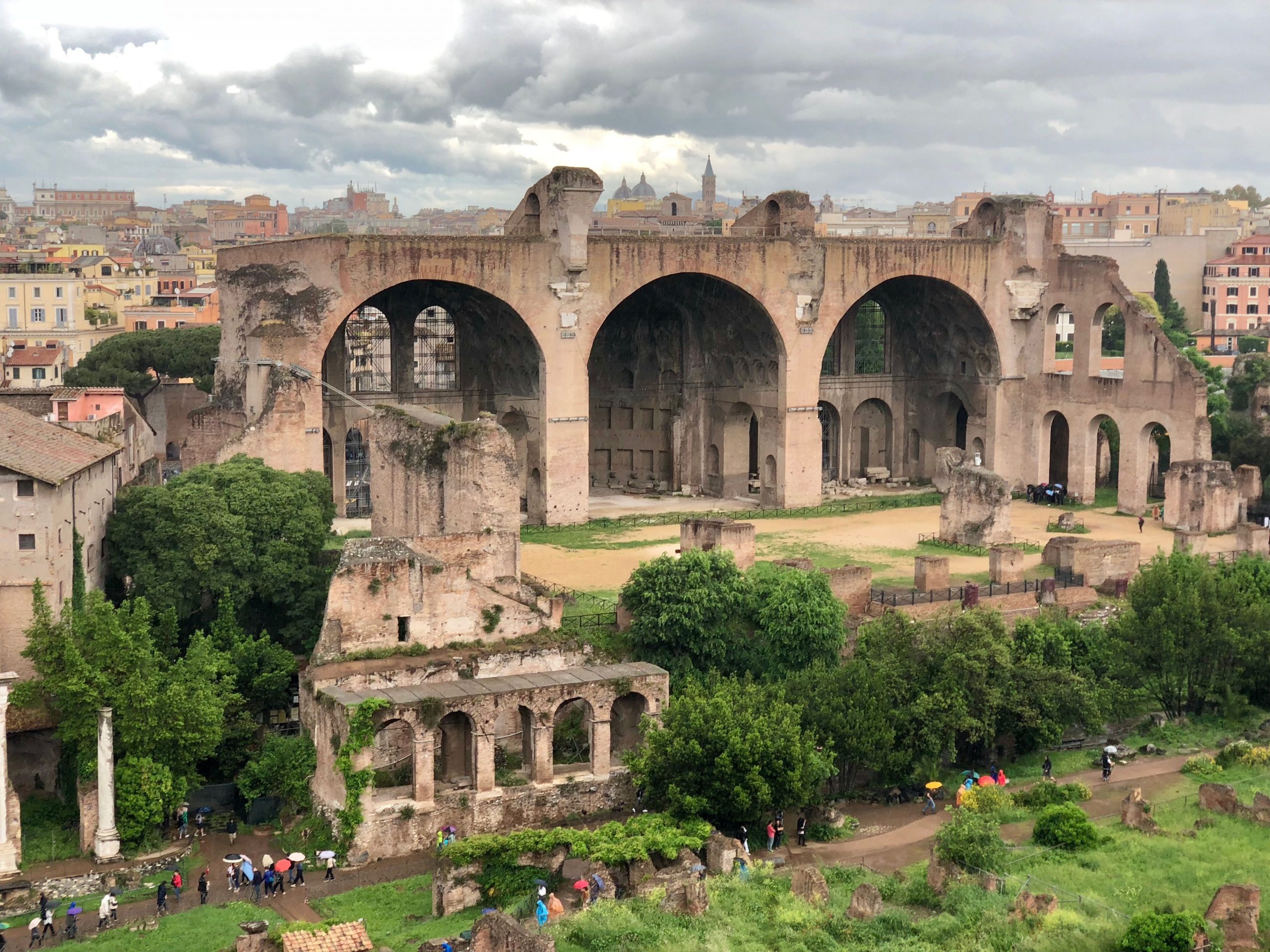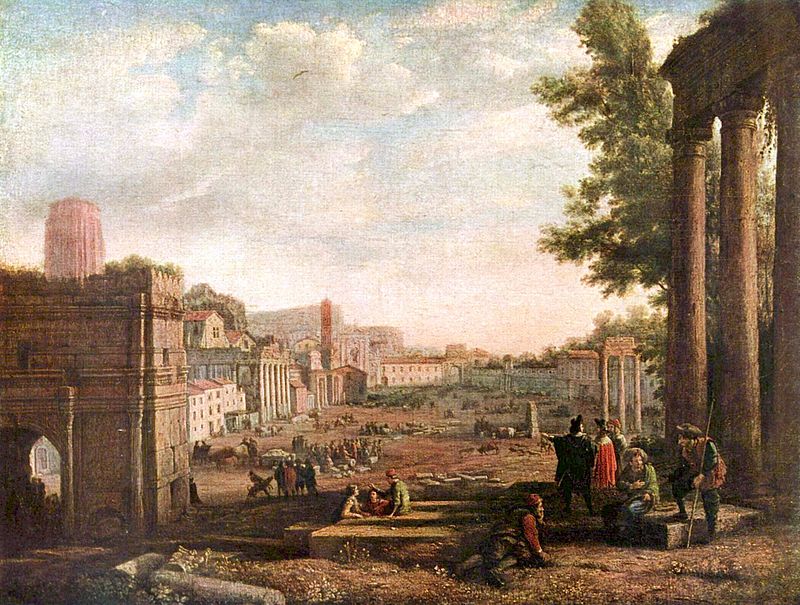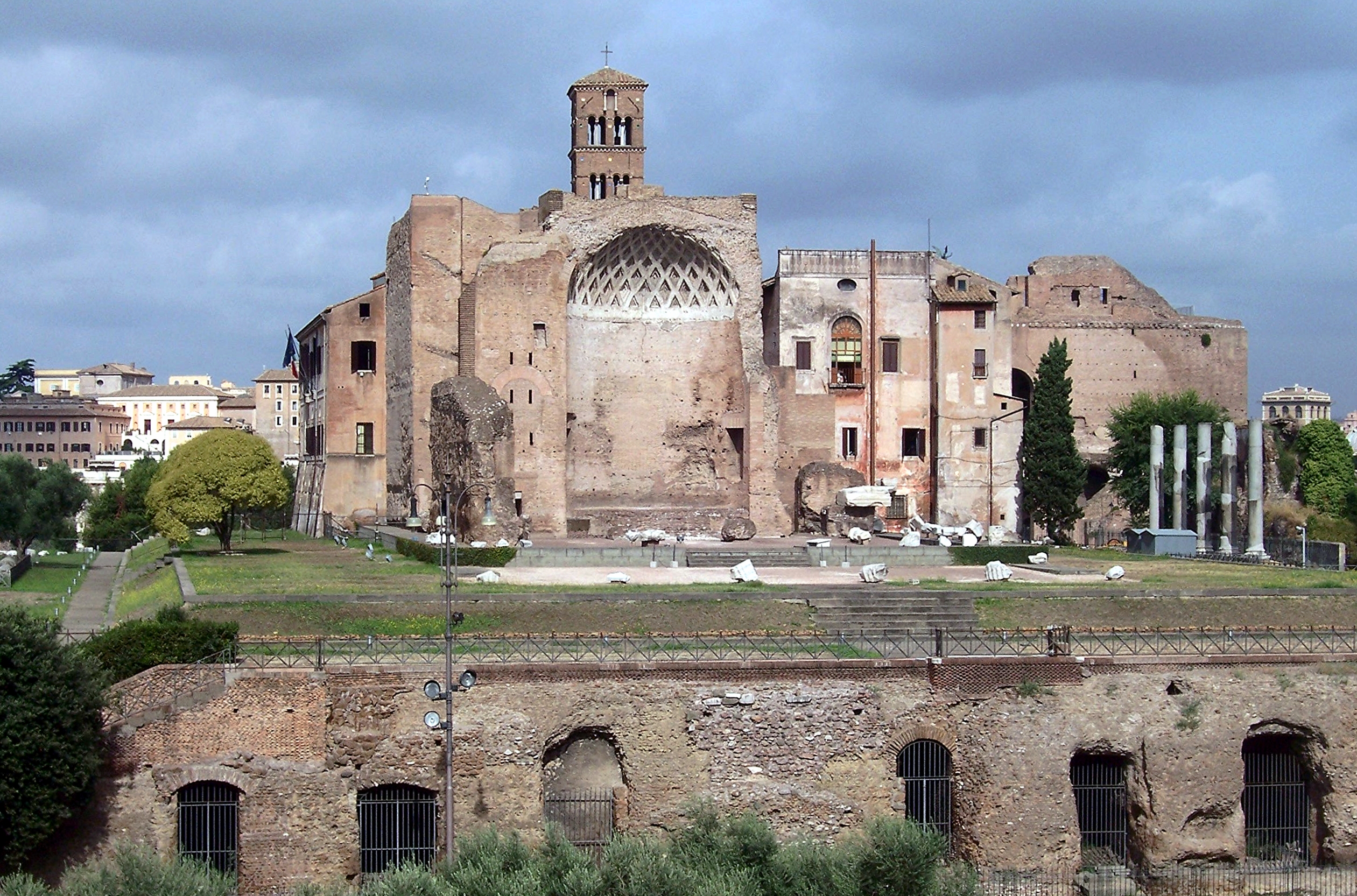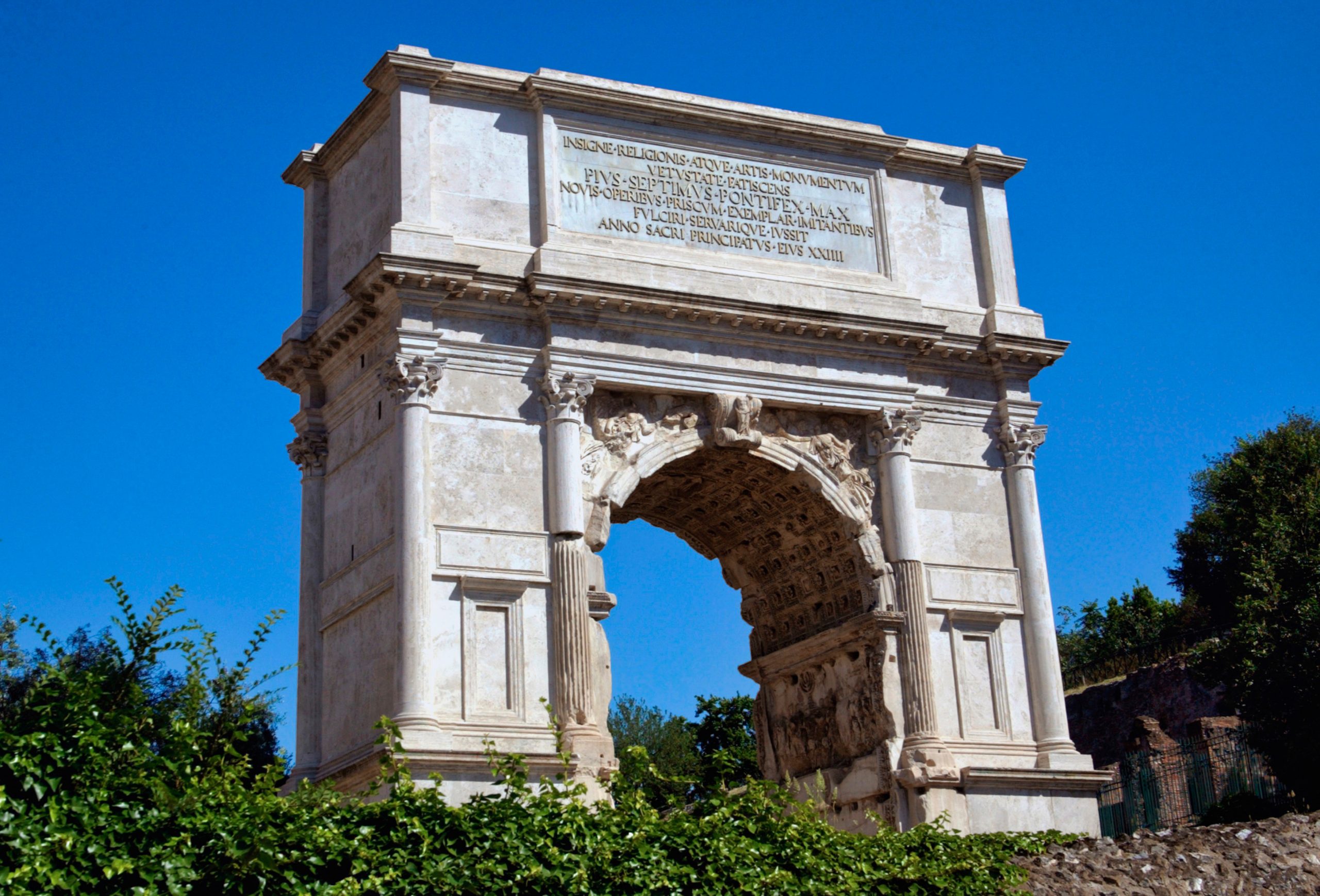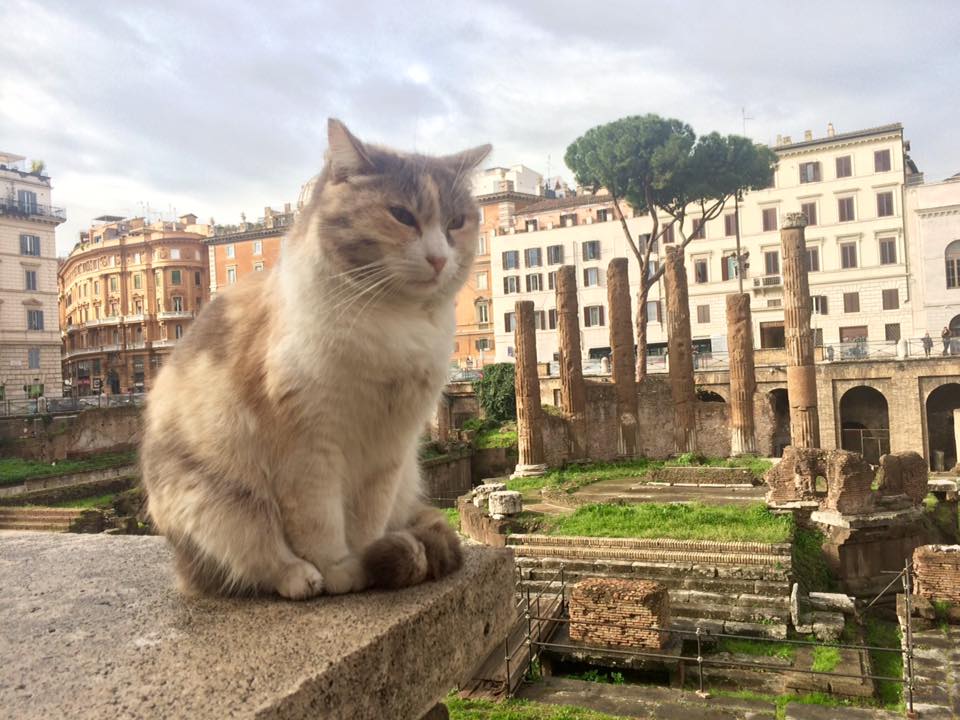LE FORUM ROMAIN : LE CŒUR DE LA ROME ANTIQUE
BEGINNINGS
The Roman Forum is home to ancient Rome’s most important sites that can still be seen today. Walking through the monuments we are reminded that the city of Rome has seen over 3,000 years of history.
Long before the Roman Forum became the heart of the ancient city, it was a marshy valley lying between several hills. The first construction in the time of the kings (around 600 BC) was a deep drain the Cloaca Maxima, with this they drained the swampy area diverting numerous streams which frequently flooded the area. This allowed the use of the valley and a large rectangular space was created and slowly converted into a public marketplace and meeting space. Rome wasn’t built in a day they say, by the 500s BC the first buildings made of local stone and terracotta tiles were built.
These first buildings were temples which were used not only for observance of the Gods, but civic functions too. As Rome entered the Republic – a quasi-democracy with elected leaders and a system of senators, magistrates and officials who oversaw the management of the state. The rectangular central square expanded with buildings surrounding it on all sides and it soon became the central hub of the city.
CIVIC AND POLITICAL CENTRE
The Roman Forum was essential to politicians and citizens alike, much like our city centres today; the place for religious, civic and political activities. At the business end of the Forum, the first Basilicas were built (a large building adopted from Greece). These were the law courts, public meeting and assembly spaces and housed offices for the officials of the state. The Basilica Aemilia and Basilica Julia flanking the Capitoline end of the Forum can still be seen in part today. Finally, a senate house appeared with the comitium in front of it – a meeting place for discussion before voting.
The first temples on the Forum were those of Saturn and Vesta, with eight remaining columns the Temple of Saturn is a particularly striking sight.
The small temple of Vesta we see today is a 20th century reconstruction. Many other temples were added over time to important Gods – the forum was also the place to take part in sacrifices and religious processions. By the end of the 1st century BC, Men started to become gods with the building of the Temple of the deified Julius Caesar (only a stump of stone today) by Augustus in 29BC.
By the beginning of the 1st century AD few people lived on the forum as it had become the focus of daily life with bars, restaurants, brothels shops and markets. The few people to live on the Forum were the Vestal virgins who had an apartment complex attached to the temple and the house of the high priest the Regia.
CENTRE OF AN EMPIRE
The Roman Forum is also home to the triumphal arches of both Titus and Septimius Severus – the former showing intricate representations from Titus’ Siege of Jerusalem in 70 AD and Septimius Severus’ campaign in Parthia (modern Iran). Both arches show scenes of the triumphal parades that went through the forum to celebrate the subjugation of new territories. As well as the triumphal arches recording military victories, statues of important individuals were raised on columns on the rectangular paved square in the centre. Some of these still stand today (minus their statues).
The basilica of Maxentius
The massive Basilica of Maxentius, a third of which dominates the upper part of the Forum, was the largest new Basilica built in the 4th century. Finished by Constantine after he deposed Maxentius at the battle of Ponte Milvio, this courthouse and meeting hall would later be used for the design of the first churches. Even much later in the 16th century, Bramante and Michelangelo studied this basilica to complete the new Basilica of St Peter’s planned by Julius II.
Many roads ran through the Forum, the most significant still surviving is the original Via Sacra which led from the Via Triumphalis up into the Forum (by the Arch of Titus) and snaked down into the valley, past the long side of the central square and up to the Capitoline Hill where the most important and sacred temples were. Today visitors can follow in the footsteps of the ancient Romans on this road – from senators to merchants and prostitutes – everyday life played out here.
The Via Sacra was used for religious parades, triumphant parades and state funerals – like that of Julius Caesar, when throngs of Romans filled the forum to see his funeral parade after his assassination. To this day, flowers are still left at the remains of the Temple of the Deified Julius Caesar, even though the resting place of his ashes remains unknown.
THE COW FIELD
When Constantine left Rome in the 330s AD to build his new city I the east (Constantinople) the constant expansion and fervour of state buildings ended. Rome fell to the barbarians who during the 5th century came in waves sacking Rome over and over again, destroying and pillaging. Once the aqueducts were broken in the 6th century the town centre that had seen over a thousand years of use was abandoned. The last monument erected on the forum was the column of Phocas in 609 AD.
A silent witness of Rome’s turbulent past, the Roman Forum slowly decayed, earthquakes brought the buildings down, pillaging for marble left buildings in ruins and floods and vegetation filled the valley. The Forum lay under debris for centuries and became known as the Campo Vaccino (Cow field). Finally, in the early 19th century, the area was cleared by archaeologists and excavations began. The work is ongoing to this day, with new areas being unearthed and opened to the public.
The Roman Forum is the one place where you can walk among the monuments of antiquity and tread the same path as the likes of Julius Caesar, Cicero and the emperors.
Check out our ‘Visiting the Colosseum’ Roman Forum tab to find out more!

